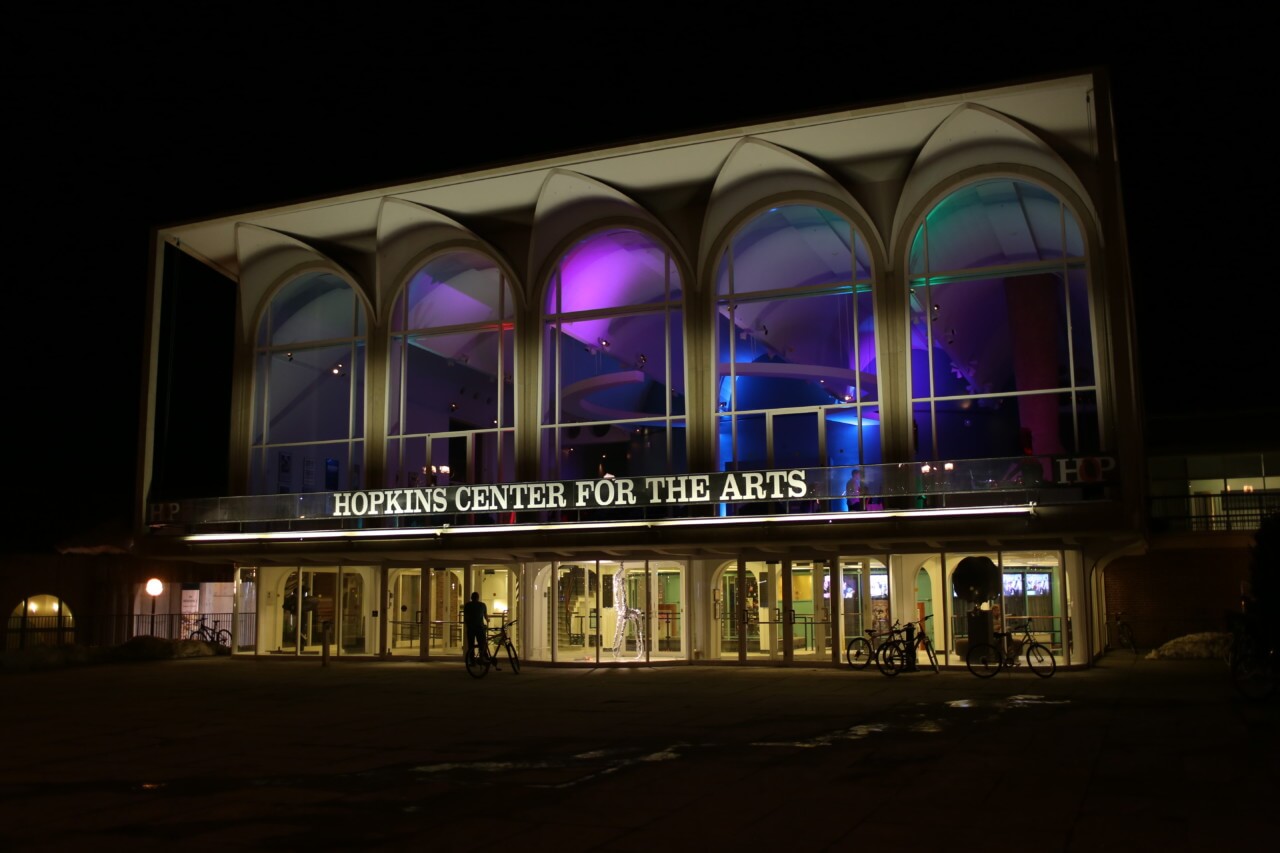Dartmouth College has announced the selection of Snøhetta to lead a major overhaul of the Hopkins Center for the Arts, a multifaceted cultural hub located within the university’s bustling Arts District where its close (and in the latter instance, physically connected) neighbors include Machado Silvetti’s Black Family Visual Arts Center (2012) and the Charles Moore-designed Hood Museum of Art, which emerged from a renovation and expansion project headed by Tod Williams and Billie Tsien Architects in 2019.
Debuting in 1962, the Hopkins Center—or, simply, the Hop—was designed by Wallace K. Harrison, the famed modernist best known for his work in New York State including Albany’s Empire State Plaza, Rockefeller Plaza, the Corning Museum of Glass, and the master plan of the Lincoln Center for the Performing Arts including the Metropolitan Opera House, which the Hop, completed four years prior, foreshadowed in its design. At its opening, the Hop was unlike anything else found an American university campus; an all-in-one arts center that brought together a range of different creative disciplines—dance, music, theater, film, and more—under one inclusive (and rather crowded) roof.
While the Hop has served the Dartmouth community well over the decades, the planned expansion and redesign headed by the New York office of Snøhetta will help lift the iconic facility into the 21st century. According to a press release issued by the Hanover, New Hampshire-based Ivy League school, the planned expansion is part of a broader reimagining of the Hop to “support greater and more ambitious creation of cross-disciplinary work onsite and to meet the growing demand of Dartmouth students and faculty for artistic expression and experiences.”
The project is in the early stages and design renderings and a construction timeline are unavailable at this point, although Dartmouth has announced that it plans to raise roughly $75 million for the project. Of that, $70 million is earmarked for design, construction, and other related development costs while $5 million will be dedicated to programmatic growth. The reimagined Hop is a substantial part of a larger $180 million investment in the university’s Arts District that includes the $55 million investment in the Black Family Visual Arts Center and the $50 million redesign and expansion of the Hood Museum.
“The Hop has long served as a leader in the arts, bringing the voices of an incredible range of artists to our region and cultivating an academic experience that positions creativity at its core. As we look to the future, we are committed to establishing new spaces and opportunities that will enable artistic ideas to flourish and be realized within our community,” said Mary Lou Aleskie, the Howard L. Gilman ’44 Director of the Hopkins Center for the Arts, in a statement. “We are excited to embark on this project with Snøhetta, whose experience, knowledge, and enthusiasm make them an ideal partner, and to realize the full potential of the Hop as an iconic 21st-century center for collaboration, education, and experiences.”
Dartmouth has also announced a set of design priorities that will be further developed by Snøhetta alongside university leadership as the project moves forward. Namely, these priorities revolve around expanding the Hop’s current physical footprint of 175,000-square-feet and “enhancing the flow and function” of existing interior and exterior spaces. Together, these goals aim to “improve the Hop’s ability to serve as an active site for gathering, study, and creative experimentation,” according to the university.” The design development process will also ensure that the reimagined Hop better enables students and visiting artists to realize creative works wholly onsite.
The design priorities detailed by Dartmouth are:
- Creating a trio of new recital halls and teaching studios, including a multi-purpose performance space;
- Incorporating state-of-the-art technologies that will allow the Hop to “document, share, and broadcast Dartmouth-originated works across the world;”
- Enhancing the acoustics, flow, and wayfinding throughout the existing building;
- Enhancing the center’s various community, social, and study spaces, including the Top of the Hop, a popular second-floor special event venue;
- Significantly upgrading the existing rehearsal rooms;
- and introducing a new, more welcoming entry area to the Hop “for ease of arrival and orientation.”
As noted by the university, Snøhetta was selected for the project in part due to the Oslo-founded firm’s experience in breathing new life into existing contexts while “invigorating and celebrating the best of what is already there.”
“This approach will honor the Hop’s original architecture, while establishing new design synergies within and across the expansion as well as with the other buildings in the Arts District and the broader campus landscape,” the university explained in its announcement.
AN will continue to track the progress of the project as it moves along and new details emerge.
